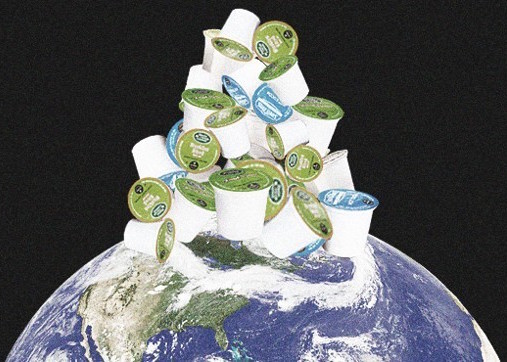|
 This image was taken from The Atlantic This image was taken from The Atlantic
|
The controversial K-cups have truly changed the way we purchase and interact with coffee (and tea). The delivery of "freshly ground" coffee in the impermeable cup means that the ground has had limited contact with oxygen, which would normally deteriorate aroma and taste. This allows Keurig to deliver a high quality coffee that can compete with recently produced, local ground.
More importantly, the K-cup is the waste disposal mechanism post-brewing. The self-enclosed pods are removed from the Keurig machine with no additional need for scrubbing or cleaning of used coffee/tea. This is quite a game-changer!
Unfortunately, this sytem brought with it some challenges. Beyond the embodied energy and manufacturing expense of these single-use K-Cups, their disposal is not a trivial problem when considering the growing number of deployed brewing systems. In 2016, the first recycleable K-cups were introduced to market, and a commitment was made that by 2020 all K-Cups sold in the US would be recycleable.
In summary, the K-Cup offers superior functionality to any other means of purchasing coffee, particularly with regard to post-brew waste disposal convenience (at a cost to the planet which Keurig is trying to manage).
|